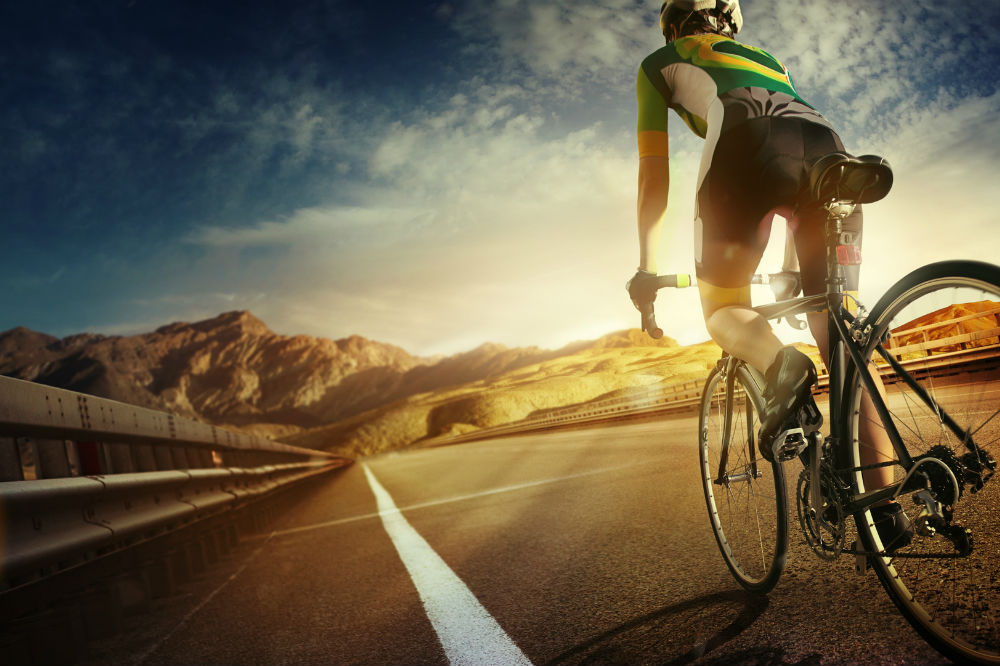- You are here:
- Home »
- Road Bikes Advice
- » Triathlon Bikes vs. Road Bikes

Triathlon Bikes vs. Road Bikes
If you are new to the triathlon sports, your first question might be, “What type of bicycle do I need?”
There are many types of bicycles that serve different purposes. There are mountain bikes designed for riding off road trails, cruiser bikes for casual riding, hybrid bikes which have the capabilities of both road bikes and mountain bikes, city bikes which are ideal for commuting or riding in a city, tandem bikes which are built for two, and more.
But in the world of triathlons, the question is “which type of bike is suitable?”
To answer this question, let us take a look at the properties of each bike and their advantages. Let us take a look at their differences, too.
Triathlon Bikes
Triathlon bikes are road racing bicycles designed to optimize aerodynamics to lessen air resistance. They have an aggressive geometry which means that the seat tube angle is steeper.
Typically, the seat tube angle is 76-78 degrees. This geometry puts the biker’s hips over the cranksetto engage their quadriceps more to increase power.
This puts the biker in a more forward position with their upper body weight supported by the skeletal rather than muscular system to lessen fatigue. It might look like a forceful position but it is comfortable and more aerodynamic with more efficiency and less exhaustion.
Triathlon Bikes Advantages
- It is the fastest type of bike
- It puts the rider in a more aerodynamic position, making them much faster and more efficient
- It is easier to run after transitioning from triathlon bikes
Road Bikes
Road bikes are ideal for climbing, cornering, sprinting, or biking with a group. They have a more traditional geometry and the biker is bent forward less than on triathlon bikes.
They have drop handlebars and integrated brake/ shift levers. With road bikes, the cyclist has more confidence with his/her hands on the brakes while allowing for more multiple positions on the handlebars.
Road bikes are known to be lightweight and offer comfort and versatility from commuting and recreational biking to road racing.
Advantages of Road Bikes
- They are lightweight
- They are easy and comfortable to ride
- Suitable for many types of riding
- Shifts smoothly even on a busy street and narrow alleys
Comparison of Triathlon Bikes and Road Bikes
The major difference between triathlon bikes and road bikes is the geometry of the bicycle frame, specifically the seat tube angle. This is the angle of the long tube that extends towards the seat from the bottom bracket.
The triathlon bike has a seat tube angle of 76-78 degrees while the road bike has 72 degrees. The steeper angle places the biker in a further forward position.
The biker in a triathlon bike is almost directly over the bottom bracket which is much easier to be powerful and comfortable when aiming for more aerodynamics and a much faster speed.
On the other hand, the biker on a road bike has a more laid back position which is ideal for a more efficient transfer of energy when going up a hill, pedaling at a higher cadence, cornering, and riding along a variety of terrain.
Which Is Better?
The question “Which is better: a triathlon bike or a road bike?” can only be answered by you. Are you training for racing triathlons? Do you want a bike that can be used for group biking? Will you be doing a variety of biking activities such as commuting, sprinting, or transferring loads? Will you be competitive at racing?
These guide questions will help you answer which type of bicycle is better for your needs and purpose. There’s no better type of bike, only bikes more suitable for different purposes.





